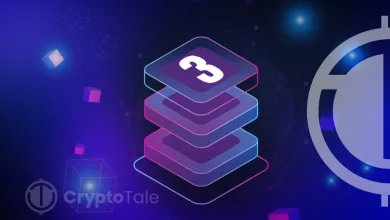Hard and Soft Forks in Blockchain: Functions & Differences

In the blockchain world, keeping the blockchain secure, efficient, and up-to-date is essential. Whether adding new features or updating existing rules, a collective agreement from the community is required. That’s where blockchain forks come in. They allow for both major and minor upgrades to the network. In this article, we’ll dive into the two main types of forks, hard and soft forks, and explain how they impact the blockchain ecosystem.
What is a Blockchain Fork?
A fork refers to the updation of network protocols on a blockchain. Usually, after a new blockchain is launched, developers constantly update it to improve its efficiency and functionality. Furthermore, its security features are updated to withstand phishing attempts on the network.
Blockchain forks are divided into two types, accidental forks and intentional forks. Accidental forks occur when two or more miners find a block simultaneously. When this happens, the blockchain is temporarily split into two blockchains, and the subsequent blocks are added. The chain with the longest number of blocks will become the valid chain, and the shorter chain, along with its blocks, will be abandoned by the network. The abandoned blocks are referred to as the orphaned blocks, and the miner who mined these blocks will lose both the transaction fees and mining fees.
Intentional forks are divided into hard forks and soft forks, and both of these forks change or update the operating model of a blockchain.
What is a Hard Fork?
A hard fork occurs when a new update is introduced to the blockchain that is incompatible with the existing protocols. In this situation, the blockchain is split into two networks, running parallel with each other. Usually, a hard fork occurs when developers disagree with the latest features, functions, or other developments on the blockchain. Further, they develop their own updates for the blockchain. Due to these circumstances, the blockchain is permanently split into two, one based on the older version along with the new updates and the other an entirely new network with new rules and protocols.
Furthermore, hard forks are not backward compatible, meaning that the nodes running on the older version cannot communicate or interact with the blocks created based on the new rules. To interact with the blocks on the new blockchain, they need to update their software. Miners and network participants need to choose whether to stay in the older version of the blockchain or move to the new blockchain.
What Is the Reason Behind the Hard Fork?
Sometimes, a simple software upgrade won’t be enough to improve a blockchain’s performance or cope with the faster technological advances in the crypto world. In these scenarios, the changes need to start at the core, which means changing the network protocols and rules. However, changing the core of a blockchain or adding new functions that improve the blockchain’s performance might lead to disagreements among the community or developers. And because of the irreconcilable differences between the two sides, the only possible way to solve them is to divide the blockchain.
Some of the most notable cases of hard forks in the crypto world are Ethereum and Bitcoin Cash.
Ethereum Hard Fork
In 2016, on the Ethereum blockchain, hackers exploited loopholes in a smart contract of an organization called “The DAO” (Genesis DAO) and stole 3.6 million Ether. In order to recover the lost funds, the Ethereum community decided to opt for a hard fork. A hard fork can help overwrite a blockchain history, and through this method, they managed to recover some of the lost funds. The original chain was then called Ethereum Classic (ETC), and the forked chain was called Ethereum (ETH).
Bitcoin Cash
In 2017, the first-ever hard fork occurred on the Bitcoin network, resulting in the creation of a new blockchain called Bitcoin Cash (BCH). The main reason behind the fork was that the Bitcoin community failed to reach a consensus on the Segregated Witness (SegWit) proposal. SegWit proposal introduced a major upgrade to the existing Bitcoin network aimed at improving security, scalability and efficiency. The upgrade addressed a long-standing issue called transaction malleability, where, in theory, the hacker could alter the receiver’s transaction ID of the Bitcoin transaction, thereby rerouting the money. Furthermore, it also increased the block size from 1 megabyte to 4 megabytes. Although SegWit brought a lot of advantages to the Bitcoin network, not all members of the Bitcoin community were happy with the potential changes, resulting in a hard fork. After the hard fork, the original chain retained the name Bitcoin, while the forked chain was called Bitcoin Cash.
What is a Soft Fork?
Unlike hard forks, soft forks involve changes or upgrades to various functions or protocols in a blockchain. This usually happens when a majority of the members (miners, developers, and others) of a blockchain agree on a proposal to improve its functionalities, features, and protocols. Furthermore, a soft fork is backward compatible, meaning that nodes that do not upgrade to the new version can still gain access to the blocks and validate the transactions based on the new rules. However, they won’t be able to support or utilize the additional features completely. Sometimes, transactions that were valid under the old rules might be invalid because of the changes brought in by the new rules.
What Is the Reason Behind Soft Fork?
Soft forks usually happen when there is a need to introduce new features, fix any issues on the blockchain, or improve various functionalities in a blockchain. Unlike a hard fork, a soft fork doesn’t divide the blockchain. Instead, it slowly upgrades the blockchain to the new features and rules so that users and other network participants accept the changes brought by the upgrade. It helps the blockchain to remain competitive in the evolving world of cryptocurrency. Some examples of soft forks include,
Bitcoin Taproot Upgrade
The Taproot upgrade improved Bitcoin’s functionality by enhancing its compatibility with the Lightning network using advanced cryptographic signatures. It also includes several other BIPs that enable users to perform complex transactions at fast speeds and lower costs.
Difference Between Hard Fork and Soft Fork
| Hard Fork | Soft Fork |
| Splits the blockchain into two | Changes are made to the original chain |
| Nodes cannot access blocks on the upgraded chain for validation. | Nodes can access blocks on the upgraded chain for validation because they are backward-compatible. |
| Major changes in rules and protocols | Minor changes in protocols and enhancements in security |
| This happens when there is no majority among the members | This happens when the majority of the members agree to the changes |
Conclusion
Blockchain forks, whether hard or soft, play a crucial role in the evolution and functionality of blockchain technology. In hard forks, the changes are usually large-scale, leading to controversies within the community, thus resulting in a permanent split in the blockchain and the creation of a new blockchain. Soft forks, on the other hand, enable changes and improvements within a blockchain while maintaining backward compatibility and without creating a separate blockchain. In the final analysis, forks are essential to implement new features and enhance security in blockchains.





